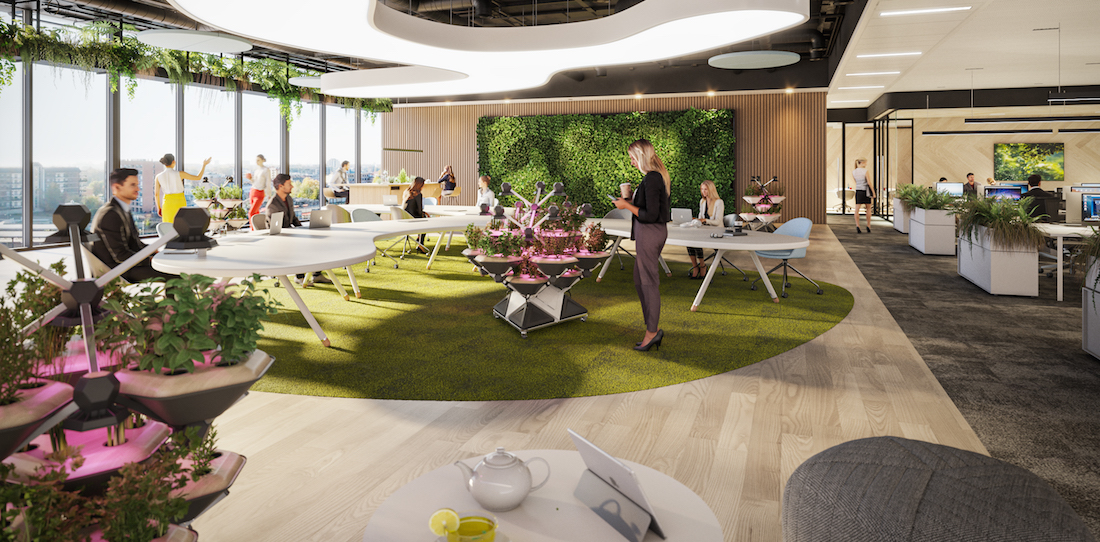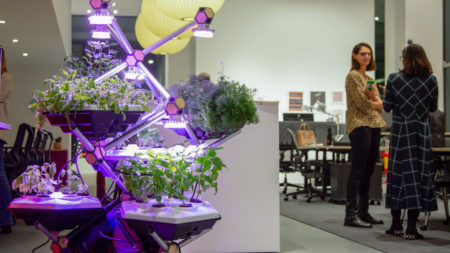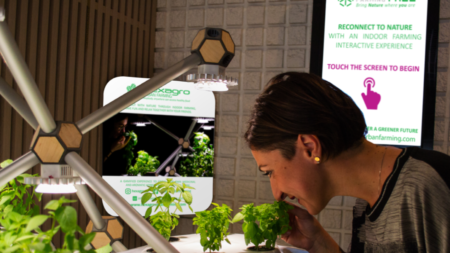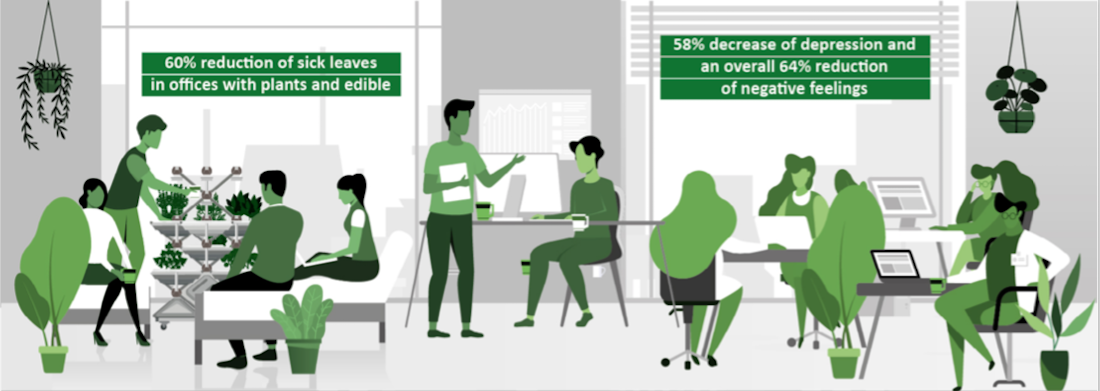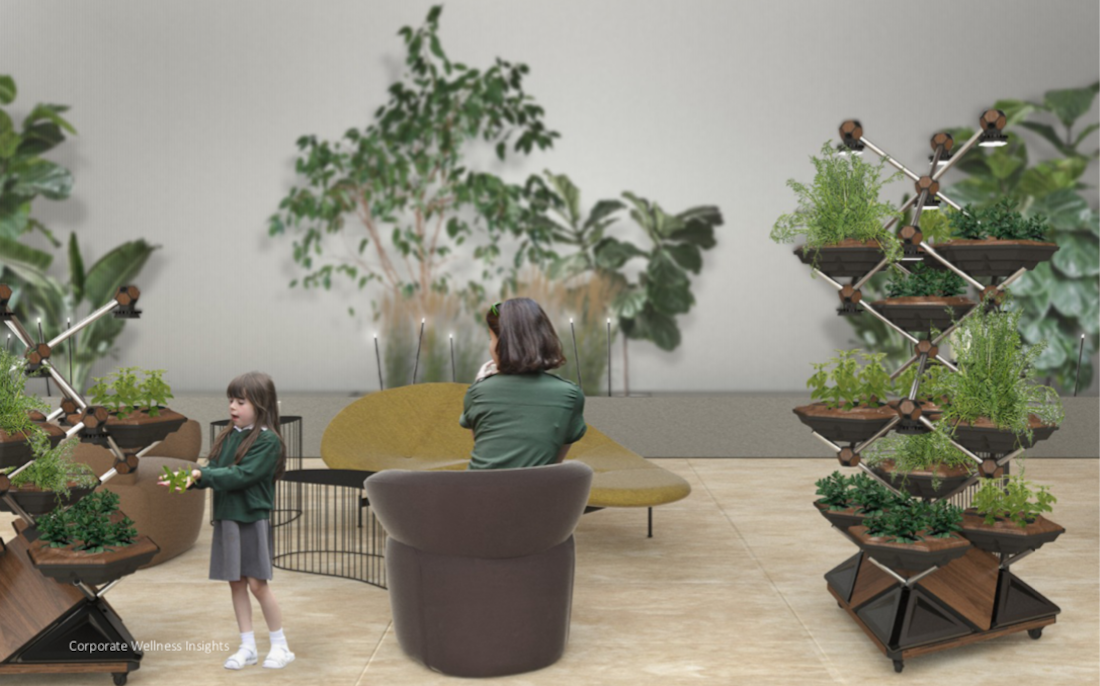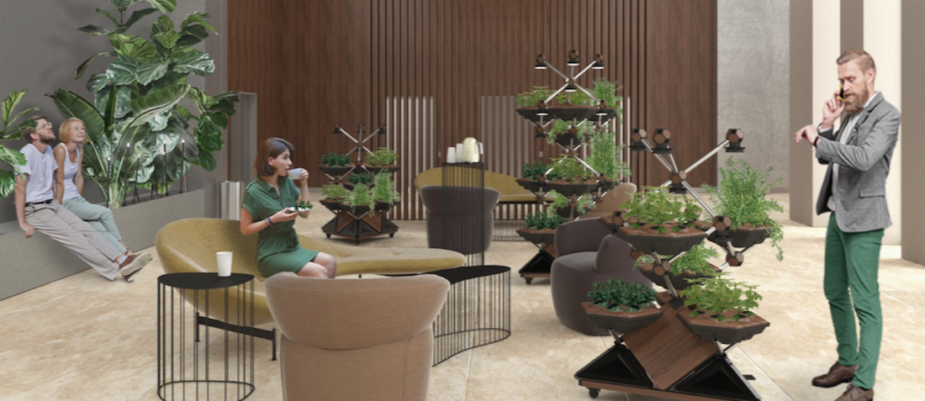
Hexagro, a Milanese startup that brings biophilic vertical gardens where people live and work, conducted a meta-research analyzing the main studies on corporate wellbeing and productivity.
The data demonstrate the advantages of contact with nature (+ 61% cognitive level; -10% absenteeism; -64% sense of negativity) compared to normal office conditions and indicating a possible solution for working wellbeing and to favor a return to the office after Covid, with greater joy, participation and healthier.
We still do not know if and for how long we will work from home, or when the great return to the office will take place, but according to all the experts it seems that a hybrid situation will await us.
The situation globally is similar. The real problem, however, is not understanding where we will work, but how and under what conditions.
If during the pandemic we got used to the comforts of our home -reducing travel- and greater flexibility of work style (who has never started a washing machine between one call and another ?!) now the terror is not to return to work with colleagues in presence, indeed several studies are already showing how the physical presence in a space stimulates collaboration, creativity and above all, in large companies, promotes professional growth.
The terror is to return to a workspace in many cases designed for a workstyle that no longer exists.
The data on the state of pre-pandemic workspaces emerging from Hexagro’s survey are alarming:
– 58% of the world’s offices have no plants;
– 76% of employees report health problems related to the workplace –
– The indoor air quality of workspaces has on average 5 times more pollutants than outside;
– 76% of people declare that they do not interact with the participants during the meetings.
This situation leads to exacerbate (up to 37%) the increase in annual costs for each employee who works (and lives) in a state of psychophysical malaise.
These figures have certainly not improved during the pandemic.
According to Harvard Business Review, in fact, when asked “actually, how productive were companies during the pandemic compared to where they were before Covid-19?” The various surveys answer that “it depends on the type of company”.
Some have remained remarkably productive, leveraging the latest technologies to collaborate effectively and efficiently.
Most of them, however, are less productive now than they were 24 months ago. And the difference lies in the way in which, even before Covid, companies managed and attracted their talents, as well as in the ability to orchestrate and offer good working and wellbeing conditions.
Covid-19 allowed us to recalibrated our attitudes towards work and leisure, the last few months have seen a renewed focus on wellbeing, not to mention time spent indoors which has further stimulated our appreciation for the natural world.
This renewed attention is in fact promoting the boom in the biophilia trend, which in pre-Covid Italy was still struggling to take shape.
The neuroscience studies illustrated in the Hexagro Report show that employees who work in contact with nature achieve 61% better results on the cognitive level than in normal office conditions, with a significant increase in productivity.
The positive effects are also seen on the levels of absenteeism, which decrease by up to 10%. Depression levels dropping (by -58%) along with a general sense of negativity (- 64%).
That means architects, entrepreneurs and business managers must not only ask themselves where to work, but above all HOW to work.
The positive employee experience within the workplace should be the key focus to stimulate engagement, the ability to attract and retain talent and increase productivity.
And biophilic design plays a key role in the design of workspace strategies: just 40 seconds of interaction with nature during a break increases concentration by 6%, reducing stress and blood pressure.
So what will the small village for smart workers and the downtown office have in common? Nature and Greenery.
Companies wondering how to increase the occupancy of their headquarters while employees show some resistance to returning to the office, can find the anwer by those who designs Hotels and Shopping Centers applied biophilic design: natural and interactive spaces , which stimulate wellbeing, increase people’s stay time by 36%.
So why not offer one more reason to spend quality time even within the workplace, breaking common uses of spaces that no longer respond to new needs?
Text by Alessandro Grampa, co-founder and CCO of Hexagro.

